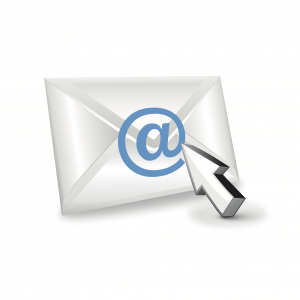3 Steps To Writing A Better Subject Line
The subject line is the gateway to your email message. Before your subscribers can read what you have to say, they have to click on your subject line — it needs to convince them that what’s inside is worth their while. It doesn’t matter how many best practices your message follows; if your subject line […]
 The subject line is the gateway to your email message. Before your subscribers can read what you have to say, they have to click on your subject line — it needs to convince them that what’s inside is worth their while.
The subject line is the gateway to your email message. Before your subscribers can read what you have to say, they have to click on your subject line — it needs to convince them that what’s inside is worth their while.
It doesn’t matter how many best practices your message follows; if your subject line flops, your subscribers won’t even bother with the rest of your message.
Here are three steps — plus a bonus insight — to improve your subject lines and get the right kind of attention from your readers.
Step 1: Get Into Your Customers’ Mindset
You might be tempted to turn every element of your message into an opportunity to sell. But an effective subject line doesn’t try to make a sale. The job of an effective subject line is to get your reader to open your message.
This means you need to think like your customers. You’re asking for a time commitment from them — however small — to stop and read your email. So what’s in it for them? What kind of value will your subscriber get in exchange for opening your message? This is what your subject line should answer. A good subject line doesn’t sell, it entices.
Step 2: Use Snippets
Some email clients, like Gmail, display the first few lines of text in your email beside the subject line as a preview. This is called a snippet, and it’s usually populated by information in your preheader.
But like the example above, many businesses don’t take advantage of the snippet’s full potential. The snippet can act as an extension of your subject line, showing more of the value in store for subscribers who open.
David’s Bridal has the right idea. Without even opening the email, I know the information inside is going to save me time and stress. That’s the kind of email I want to take the time to open and read!
Step 3: Don’t Over-Stress About Spam Filters
You’ve probably heard that you should never use the word “free” in your subject line. Plenty of email marketers stress about accidentally triggering spam filters based on certain keywords in their subjects.
While content filtering is a serious concern, you don’t need to consciously avoid these words. Late last year Yahoo! released a Mail Visualization tool that shows popular keywords in subject lines that get delivered and blocked for spam. “Free” showed up in both. It’s less about the specific words you use and more about how you use them.
Instead of worrying about trigger words, make sure that your subject line accurately reflects your message content. Spam filters will zap a misleading subject line regardless of the keywords it contains.
Bonus Step: Test And Experiment
Here’s your bonus step: Always test and experiment with your subject lines to find what’s most effective for your audience.
You might think that a subject written in all capitals looks obnoxious, but one small business ran a test with surprising results: the all-caps version of one subject line they tested got 18% more opens than their normal subject line. You might find a surprise or two like this yourself. But you won’t know until you test to find the formula that works for you.
Contributing authors are invited to create content for MarTech and are chosen for their expertise and contribution to the martech community. Our contributors work under the oversight of the editorial staff and contributions are checked for quality and relevance to our readers. MarTech is owned by Semrush. Contributor was not asked to make any direct or indirect mentions of Semrush. The opinions they express are their own.
Related stories